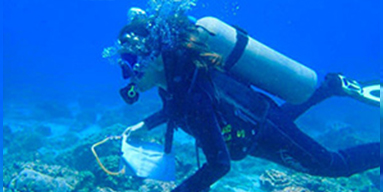Biodiversity is the foundation for our economy and wellbeing. Our work includes biodiversity and public health, business practices and economic development, policy and governance, climate change and adaptation, food systems, social and behavioral change and risk assessment.
We produce insights that transform the way the world values, manages and thinks about biodiversity. By bringing together producers of knowledge with consumers of knowledge, we enable research leading to use-inspired solutions.
We continuously evaluate and adapt ourselves to improve the efficacy and application of our actionable science model, serving as a scalable model that other organizations can tailor and implement around the world. We adopt a strategic and nimble approach to co-produce our research agenda, based on knowledge demands from our partners.
Intended outcomes
Our goal is to protect biodiversity. More specifically, we aim to generate the following outcomes:
Biodiversity is central to decision-making. Achieved by transforming conservation investment, risk assessment and sustainable practices into effective and transparent processes.
A new generation of conservation leaders represents a diverse and global community. Achieved by training diverse and underrepresented students, facilitating experiential career advancement opportunities and identifying and closing gaps in the curriculum – specifically in strategic leadership and environmental communication.
Actionable and collaborative science provides effective solutions for reducing biodiversity loss. Achieved by harnessing approaches such as structured decision making to co-produce decision support frameworks and practical and pragmatic tools for achieving conservation outcomes.
How we work
Our approach embraces key elements of structured decision-making.

To achieve the objectives we continually consider how our research approach and activities work to achieve our goals. First, we work with partners to identify conservation decision needs and possible solutions. We then use data and evidence synthesis to identify the possible outcomes of alternative solutions. Finally, we work with partners to study how implementing solutions affect biodiversity outcomes, and in doing so build our knowledge base about what works in conservation.
Our research approach focuses on three intertwined and overlapping areas:

Evidence, metrics and monitoring
Generating empirical support for measuring impact and evaluating outcomes, training and capacity building for what evidence is and how to use it.
Examples of biodiversiy outcomes
The following graph illustrates how we apply structured decision-making to achieve examples of outcomes in biodiversity conservation.

We study ourselves
As we implement this actionable science model, we continuously evaluate and adapt ourselves to improve our approach, increase its success rate and serve as a scalable model that other institutions can apply across the globe.
Current projects
Actionable science, boundary organizing and co-production of biodiversity outcomes
Our goal through this project is to gain a better understanding of the determinants of actionable science in conservation. While there has been exponential growth in conservation research, much of this science fails to be translated into practice and policy. Numerous solutions have been proposed to bridge this knowledge-action gap, yet it persists.



Big data and biodiversity
The Center for Biodiversity Outcomes is partnering with the ASU Biodiversity Knowledge Integration Center to integrate big data in biodiversity decision-making.


Conservation Solutions Lab
The Conservation Solutions Lab employs an evidence-driven interdisciplinary approach to bring knowledge of what works to conservation and development practitioners to advance effective and equitable engagement of communities in conservation programs. CSL is a collaborative initiative led by a unique partnership between the Arizona State University Center for Biodiversity Outcomes and Chemonics International.












































Decision science for endangered species pesticide risk assessment
The Center for Biodiversity Outcomes is working with Bayer to develop a decision-making tool to enable them to estimate the range of potential operational, reputational, legal and regulatory risks associated with compliance with the U. S. Endangered Species Act.



Diversity and inclusion in conservation science
The Center for Biodiversity Outcomes is developing programs that provide basic literacy in the environment and ecological sustainability, with a particular focus on engaging underserved youth.




Endangered Species Recovery
The Center for Biodiversity Outcomes has partnered with the National Socio-Environmental Synthesis Center and the U. S. Fish and Wildlife Service to develop a tool to compare different funding allocation strategies for actions to recover endangered species. This tool is called the Endangered Species Recovery Explorer. This work was motivated, in part, by recognition from USFWS of past critiques of its recovery allocation process.



Fisheries supply management
This project seeks to organize a community of practice, comprised of human rights and fisheries experts and practitioners, to catalyze the systematic integration of social responsibility into seafood supply chains.






Mainstreaming biodiversity in the business sector
The Center for Biodiversity Outcomes is working with several partners to bring together biodiversity data from multiple sources and create new methods to integrate the data into corporate decision-making.




Plastic pollution and biodiversity risk
The Center for Biodiversity Outcomes is a member of the Plastic Pollution Emissions Working Group. PlasticPEG, who is supported by the National Socio-Environmental Synthesis Center, is developing a global model that will estimate the efficacy of varying marine plastic pollution intervention strategies.


Return on investment in biodiversity conservation
Global biodiversity loss is occurring at an unprecedented rate, due in part to a significant shortfall in funding for conservation actions. This research seeks to answer, “How much does it cost to achieve a conservation outcome?”


Total: 10




